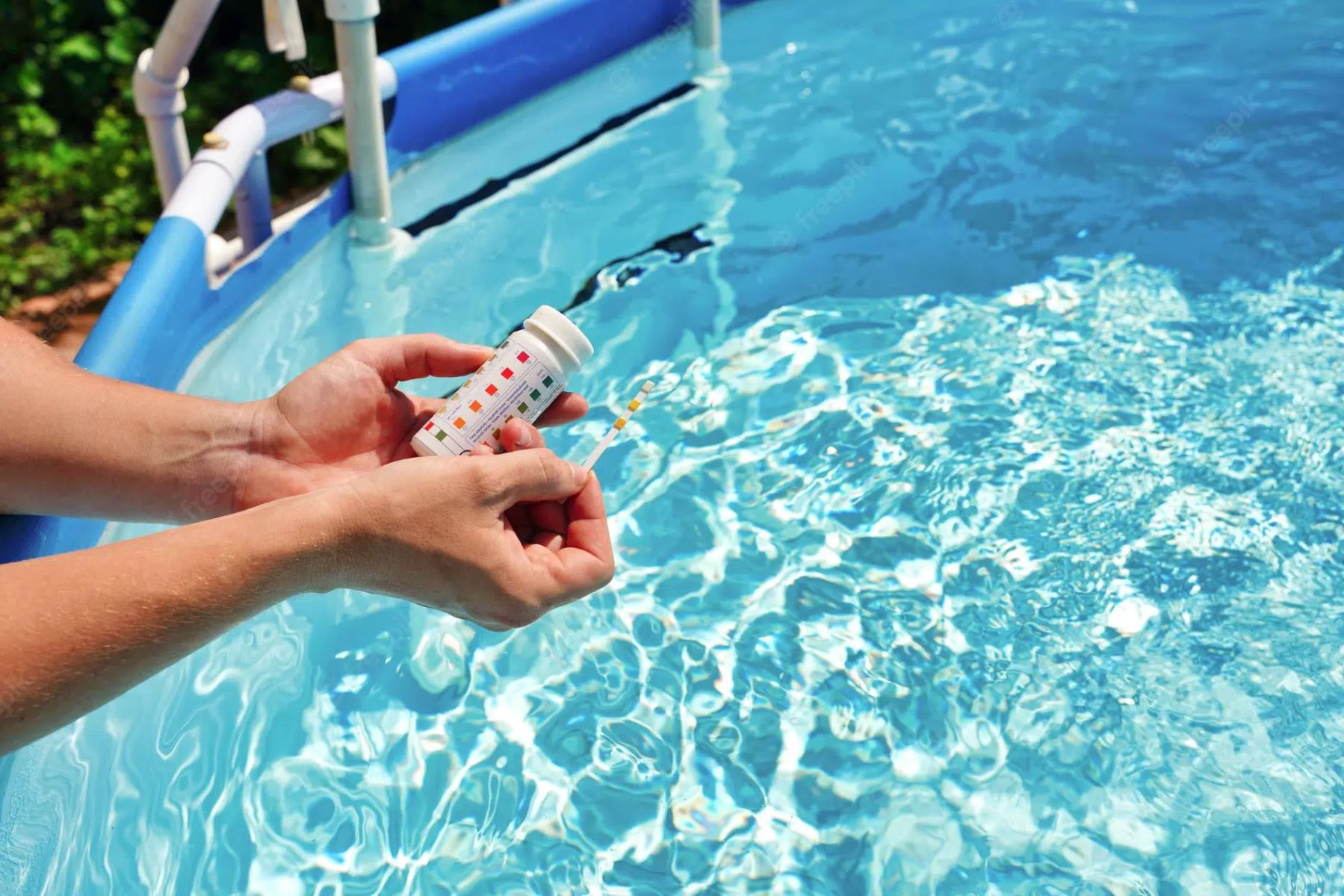Home>Parenting and Children>5 Creative Ways To Discipline Your Daughter


Parenting and Children
5 Creative Ways To Discipline Your Daughter
Modified: November 27, 2024
Discover effective and creative discipline strategies for parenting daughters. Learn how to navigate the challenges of raising children with positive reinforcement and healthy boundaries.
(Many of the links in this article redirect to a specific reviewed product. Your purchase of these products through affiliate links helps to generate commission for Regretless.com, at no extra cost. Learn more)
Table of Contents
Introduction
Disciplining a daughter can be a delicate and challenging aspect of parenting. It requires a delicate balance of guidance, boundaries, and understanding. As a parent, it's natural to want to raise a well-behaved and respectful child while also nurturing their individuality and independence. The goal of discipline is not to control a child but to teach them essential life skills, responsibility, and empathy. By approaching discipline with creativity and empathy, parents can foster a positive and nurturing environment for their daughters to thrive.
In this article, we will explore five creative and effective strategies for disciplining your daughter. These approaches prioritize open communication, natural consequences, positive reinforcement, and visual aids to help guide your daughter towards making responsible choices. By integrating these strategies into your parenting approach, you can establish a strong foundation for your daughter's emotional and behavioral development, nurturing a healthy and respectful parent-child relationship.
Discipline is not about punishment; it's about teaching and guiding your daughter to understand the impact of her actions and choices. By incorporating these creative discipline strategies into your parenting toolkit, you can create a supportive and encouraging environment where your daughter can learn, grow, and flourish. Let's delve into these strategies and discover how they can positively influence your daughter's behavior and character development.
Setting the Stage
Setting the stage for effective discipline involves establishing a nurturing and communicative environment within the family. It's essential to create a foundation built on mutual respect, understanding, and clear expectations. As a parent, it's crucial to cultivate a supportive and empathetic relationship with your daughter, laying the groundwork for constructive discipline.
First and foremost, it's vital to lead by example. Children often emulate the behavior of their parents, so demonstrating patience, empathy, and respectful communication sets a positive precedent. By modeling the behavior you expect from your daughter, you create a consistent and coherent approach to discipline.
Furthermore, open communication is paramount. Encouraging your daughter to express her thoughts and feelings in a safe and non-judgmental space fosters trust and understanding. Actively listening to her perspectives and concerns demonstrates that her voice is valued, strengthening the parent-child bond and promoting a sense of mutual respect.
Another crucial aspect of setting the stage for effective discipline is establishing clear and age-appropriate expectations. Clearly outlining behavioral boundaries and family rules helps your daughter understand the standards you have set, providing a framework for her behavior. When expectations are communicated clearly and consistently, it reduces confusion and empowers your daughter to make informed choices.
Moreover, creating a nurturing and supportive home environment plays a pivotal role in setting the stage for effective discipline. Encouraging positive interactions, fostering a sense of belonging, and providing emotional support contribute to your daughter's overall well-being. When children feel secure and loved, they are more receptive to guidance and discipline.
In addition, it's important to recognize and celebrate your daughter's individuality. Each child is unique, with distinct strengths and challenges. Embracing her individuality and acknowledging her strengths can boost her self-esteem and confidence, laying the groundwork for constructive discipline.
By setting the stage through leading by example, fostering open communication, establishing clear expectations, nurturing a supportive environment, and celebrating individuality, parents can create a solid foundation for effective and empathetic discipline. These foundational elements form the basis for implementing creative and impactful discipline strategies that empower daughters to learn and grow.
Communicating Expectations
Clear and consistent communication of expectations is fundamental in guiding your daughter's behavior and facilitating a harmonious family dynamic. When children understand the standards set by their parents, they are better equipped to make informed decisions and navigate social interactions. Effective communication of expectations involves several key elements that contribute to a supportive and nurturing environment for your daughter's emotional and behavioral development.
First and foremost, it is essential to articulate expectations in a manner that is age-appropriate and comprehensible to your daughter. Tailoring the language and delivery of expectations to align with her developmental stage ensures that she can grasp the intended message and apply it to her daily experiences. By using language that resonates with her level of understanding, you facilitate a clear and meaningful exchange that promotes a sense of shared understanding and mutual respect.
Consistency in communicating expectations is equally crucial. When expectations are consistently reinforced, it provides a reliable framework for your daughter to navigate her behavior and choices. Consistency fosters predictability and stability, enabling your daughter to internalize the expectations and integrate them into her decision-making process. This predictability creates a sense of security and understanding, empowering your daughter to engage with the established expectations confidently.
Moreover, it is important to engage your daughter in a dialogue regarding the rationale behind the expectations. By explaining the reasons behind certain rules or standards, you provide her with valuable insights into the underlying principles of behavior and decision-making. This open dialogue encourages critical thinking and empathy, as she gains an understanding of the impact of her actions on herself and others. It also fosters a sense of transparency and mutual respect, strengthening the parent-child relationship and promoting a cooperative approach to discipline.
Furthermore, reinforcing positive behavior and acknowledging efforts to meet expectations is essential. Celebrating your daughter's adherence to the established standards reinforces the value of positive behavior, encouraging her to continue making responsible choices. Recognizing her efforts and achievements cultivates a sense of pride and self-worth, reinforcing the positive impact of meeting expectations.
In summary, effective communication of expectations involves tailoring the message to your daughter's developmental stage, maintaining consistency in reinforcement, engaging in open dialogue to explain the rationale behind expectations, and reinforcing positive behavior. By integrating these elements into your communication approach, you create a supportive and nurturing environment that empowers your daughter to internalize and embrace the expectations set forth, fostering her emotional and behavioral development.
Implementing Natural Consequences
Implementing natural consequences is a powerful and empathetic approach to discipline that allows daughters to learn from the outcomes of their choices and actions. This method focuses on the principle that actions have inherent consequences, providing valuable opportunities for daughters to develop a deeper understanding of cause and effect.
When implementing natural consequences, it's important to allow your daughter to experience the direct results of her behavior within a safe and controlled environment. For example, if she consistently forgets to pack her favorite toy for playdates, she may feel disappointed when she doesn't have it to play with. By experiencing the natural consequence of her forgetfulness, she learns the importance of being organized and responsible.
It's essential to approach natural consequences with empathy and understanding, refraining from imposing punitive measures. This approach allows daughters to recognize the impact of their choices without feeling shamed or judged. By acknowledging the natural consequences in a supportive manner, parents create a constructive learning environment where daughters can reflect on their actions and make informed decisions in the future.
Moreover, natural consequences provide daughters with a sense of autonomy and accountability. When they directly experience the outcomes of their behavior, they gain a deeper awareness of their actions' implications. This heightened awareness fosters a sense of responsibility and self-regulation, empowering daughters to consider the potential consequences before making decisions.
In addition, natural consequences encourage critical thinking and problem-solving skills. When daughters encounter the natural outcomes of their behavior, they are prompted to reflect on the situation and explore alternative approaches. This process cultivates resilience and adaptability, as daughters learn to navigate challenges and make thoughtful choices based on their experiences.
By implementing natural consequences, parents create a nurturing and supportive environment where daughters can learn and grow from their actions. This approach promotes self-reflection, accountability, and critical thinking, fostering valuable life skills that contribute to their emotional and behavioral development. It also strengthens the parent-daughter relationship, as daughters feel supported and understood in their journey of learning from natural consequences.
Using Positive Reinforcement
Positive reinforcement is a powerful and nurturing approach to discipline that focuses on acknowledging and celebrating desirable behavior and choices. This method leverages the inherent motivation within children to seek approval and validation, creating a supportive environment that encourages positive conduct and decision-making.
When utilizing positive reinforcement, it's essential to actively recognize and praise your daughter's positive behavior. Whether it's demonstrating kindness towards others, completing tasks responsibly, or displaying empathy, acknowledging these actions reinforces their value and significance. By expressing genuine appreciation for her positive conduct, you affirm her efforts and strengthen her confidence, fostering a sense of pride in her accomplishments.
Incorporating rewards as a form of positive reinforcement can further motivate and reinforce your daughter's positive behavior. Whether it's a small token of appreciation, additional playtime, or a special activity, offering rewards for exemplary conduct reinforces the connection between positive behavior and positive outcomes. This approach cultivates a sense of achievement and incentivizes your daughter to continue making responsible and respectful choices.
Moreover, positive reinforcement involves creating a nurturing and supportive atmosphere where your daughter feels valued and understood. By consistently acknowledging her positive behavior, you reinforce the significance of her contributions to the family dynamic and the broader community. This recognition fosters a sense of belonging and reinforces the positive impact of her actions, nurturing her emotional well-being and self-esteem.
In addition, positive reinforcement serves as a catalyst for strengthening the parent-child relationship. By actively celebrating your daughter's positive behavior, you demonstrate your support and encouragement, fostering a deeper bond built on mutual respect and understanding. This approach creates a harmonious and nurturing environment where your daughter feels appreciated and motivated to continue making positive choices.
By integrating positive reinforcement into your discipline strategy, you create a nurturing and empowering environment where your daughter's positive behavior is celebrated and valued. This approach fosters a sense of pride, motivation, and emotional well-being, contributing to her overall development and character growth. Embracing positive reinforcement as a cornerstone of your parenting approach can cultivate a supportive and encouraging atmosphere where your daughter thrives and flourishes.
Creating a Behavior Chart
Creating a behavior chart is an effective and visual tool that can empower parents to reinforce positive behavior and track their daughter's progress in meeting behavioral expectations. This structured approach provides a clear and tangible method for daughters to understand the connection between their actions and the resulting outcomes, fostering accountability and self-awareness.
The process of creating a behavior chart begins with identifying specific behaviors or goals that parents aim to encourage in their daughter. These can range from completing chores and homework on time to demonstrating acts of kindness and respect towards others. By delineating these behaviors into measurable and achievable objectives, parents can effectively communicate their expectations to their daughter.
Once the behaviors or goals are established, they can be translated into a visual chart format, which can be tailored to suit the daughter's age and comprehension level. The chart may include columns for each day of the week and rows corresponding to the identified behaviors or goals. As the daughter demonstrates positive behavior, such as completing a task or exhibiting kindness, she receives a checkmark or sticker on the chart, visually acknowledging her achievement.
Consistency in using the behavior chart is essential, as it reinforces the value of positive behavior and provides a structured framework for tracking progress. Regular review and discussion of the behavior chart with the daughter allows for open communication and recognition of her efforts, further reinforcing the positive impact of her behavior.
Moreover, incorporating incentives or rewards tied to the behavior chart can motivate and incentivize the daughter to consistently meet the established expectations. These rewards can range from small privileges to special activities, serving as positive reinforcement for her adherence to the outlined behaviors.
Creating a behavior chart fosters a sense of ownership and accountability in the daughter, as she actively engages in tracking her progress and taking pride in her accomplishments. It also serves as a visual reminder of the expectations, promoting consistency and self-regulation in her behavior.
In summary, a behavior chart is a valuable tool that promotes accountability, positive reinforcement, and visual tracking of progress, contributing to a nurturing and supportive environment for daughters to thrive and develop essential life skills. By integrating a behavior chart into the discipline strategy, parents can empower their daughter to make responsible choices and cultivate a strong sense of self-discipline.














